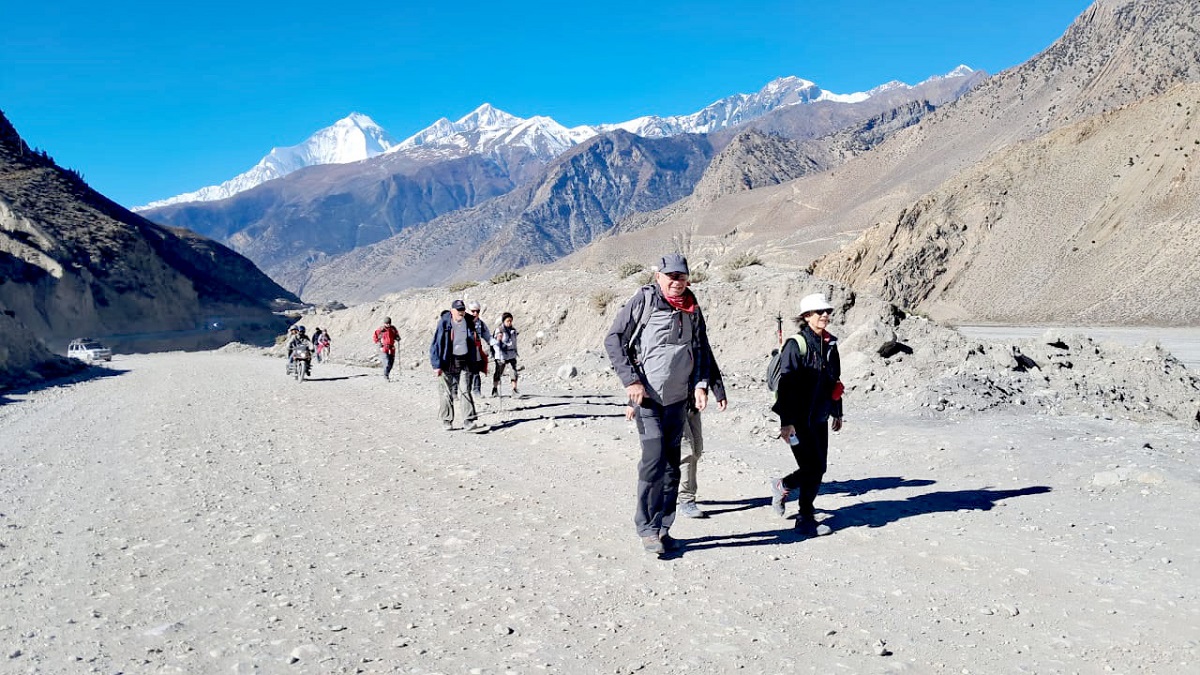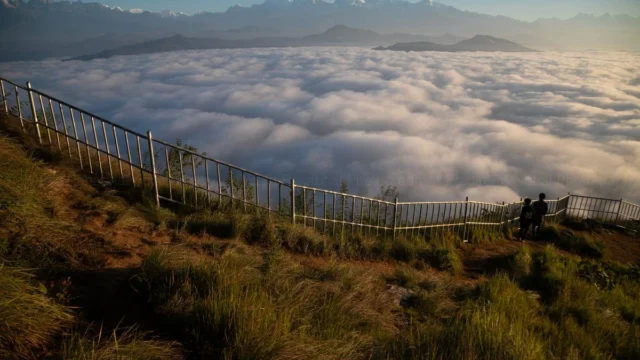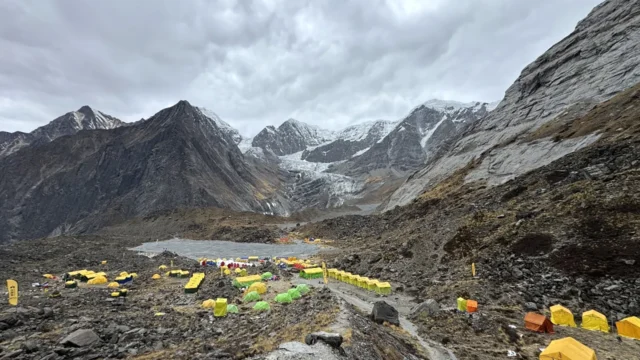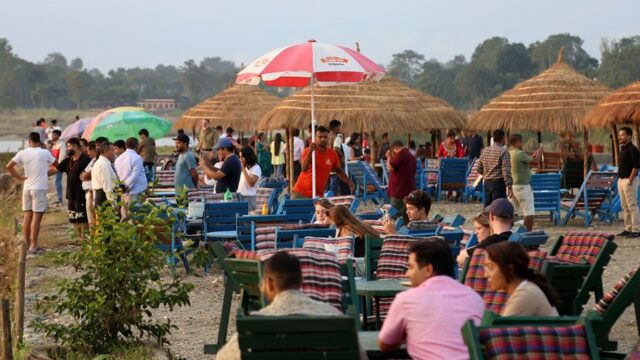As the autumn season kicks in, the primary trekking season has begun, with increased activity in Nepal’s famous trekking routes, particularly the Annapurna Circuit. Autumn (October-November) and spring (March-April) are considered the best times for trekking in Nepal, drawing international and domestic tourists alike.
According to Krishna Prasad Acharya, President of the Trekking Agencies Association of Nepal (TAAN) Gandaki, the tourist movement typically picks up in mid-October. “Bookings from foreign tourists have started, while Nepali tourists tend to travel more around the Dashain festival,” said Acharya. He noted that although trekking tourism has not yet fully recovered to pre-COVID-19 levels, there are signs of improvement, and the sector expects a rise in tourist numbers this season.
However, the delayed construction of the Pokhara-Muglin road is currently hindering the smooth travel experience for tourists in the region. Acharya emphasized the need to improve infrastructure, particularly the main road connecting Pokhara, the tourist capital, and ensuring safer and more organized air travel. He also pointed out the challenges posed by older trekking routes becoming less accessible due to road construction and suggested exploring alternative routes.
TAAN has plans to promote new trekking routes in celebration of World Tourism Day next week, and they have recently organized environmental awareness programs for trekking guides to emphasize biodiversity and conservation.
The Annapurna Conservation Area Project (ACAP) reports that 2,577 foreign tourists have entered the Annapurna region in just three days since the beginning of October. Among them, 1,572 are from South Asian countries, and 1,005 from other nations. In September, a total of 13,270 tourists visited the region, with 7,369 from South Asia and 5,901 from other countries. ACAP keeps detailed records of tourists visiting the region both via trekking and road routes.
ACAP Chief Dr. Rabin Kandel highlighted their efforts to maintain the Annapurna region as a waste-free zone, urging tourists to avoid bringing plastic items and bottles. He also warned that altitude sickness is on the rise in high-altitude areas, especially near Mustang’s Muktinath, and advised trekkers to exercise caution and not ascend too quickly without proper acclimatization.
Last year, 21 trekkers died from altitude sickness in the Annapurna region, including six Nepali nationals, 11 Indians, two Malaysians, one Ukrainian, and one British tourist. Dr. Kandel emphasized the importance of taking breaks and hiring guides when embarking on long-distance treks.
Julie Pun, a tourism entrepreneur from Ghorepani, Myagdi, confirmed that trekking tourists have started arriving as the weather clears up. However, she noted that most domestic tourists prefer road travel, and the condition of the roads has been a challenge. “The damaged roads have not been repaired, making it difficult for tourists to travel, and even harder for us to transport necessary supplies,” she shared.
Pun also mentioned that foreign tourists are yet to return to Ghorepani in pre-COVID numbers. Frequent plane crashes in Pokhara and delays in the Kathmandu-Pokhara highway have further affected tourism. “The government must invest in infrastructure development and promotion to revitalize the tourism sector,” she added.
Popular trekking destinations in the Annapurna region include the Annapurna Base Camp, Mardi Himal, Ghandruk, Tilicho Lake in Manang, Thorang La Pass, Upper Mustang, Muktinath, and Ghorepani in Myagdi. Villages such as Khumai Danda, Kori, Sikles, Dhampus, Tangting, and Lwang in Kaski are also known trekking destinations. According to ACAP, the region offers short, medium, and long-distance trekking options, starting from various routes in Kaski, Lamjung, Manang, and Myagdi districts.
The Annapurna Circuit has garnered international attention, with Lonely Planet ranking it among the top 10 must-visit destinations globally. In 2023, CNN included Mustang Valley, located within the Annapurna Conservation Area, in its list of 23 must-visit destinations worldwide. Last year, UN Secretary-General António Guterres also visited the Annapurna Base Camp.
The Annapurna Conservation Area covers 7,600 square kilometers and includes 89 wards in 16 local units across Kaski, Lamjung, Manang, Myagdi, and Mustang. The region attracts both international and domestic tourists for its stunning natural beauty, biodiversity, and cultural experiences. In the last fiscal year, 222,180 foreign tourists visited the Annapurna region, with 117,845 from Asia and 104,256 from other regions.
Once popular only among foreign tourists, the Annapurna trekking routes have now become equally favored by domestic travelers. The region’s breathtaking natural landscapes, unique geography, climate, biodiversity, and Himalayan lifestyle, combined with the opportunity to explore culture and heritage, continue to make it a top choice for trekkers. Besides recreation, trekking is also considered beneficial for physical and mental health, making it an ideal activity for well-being.






